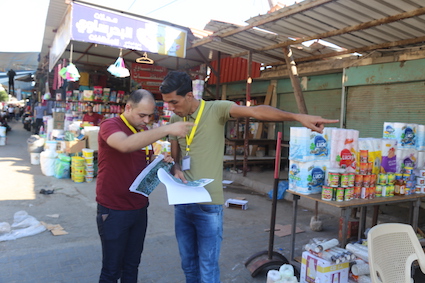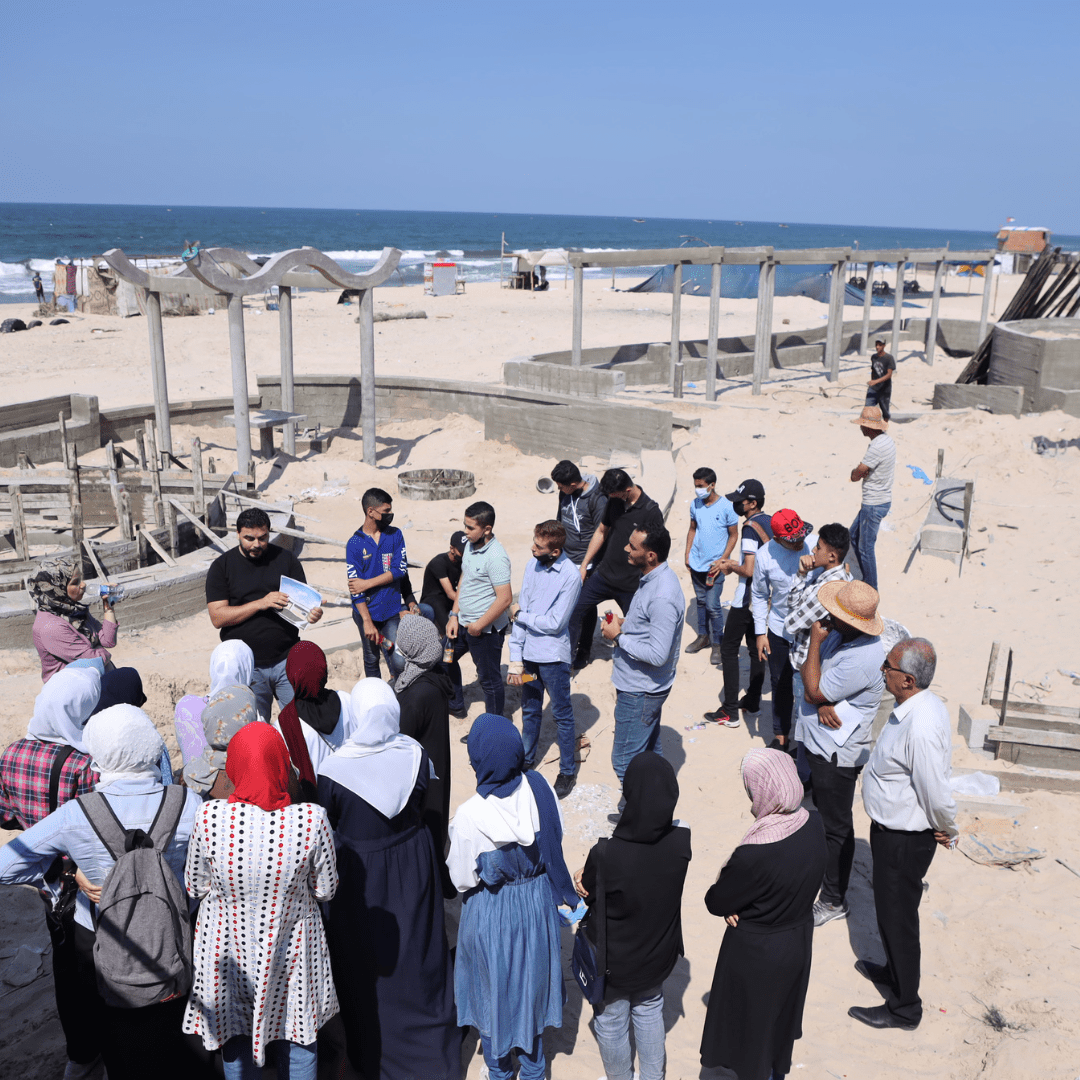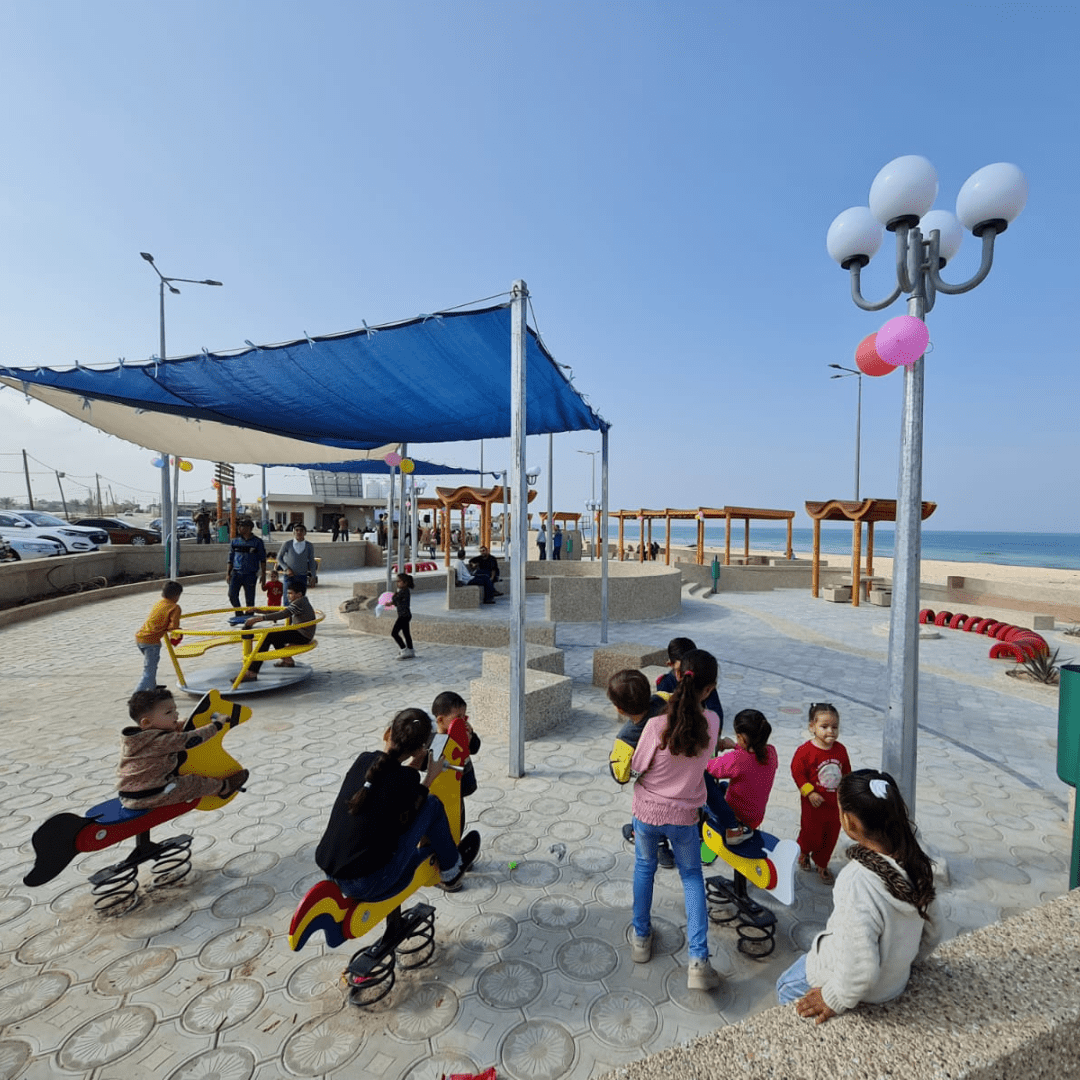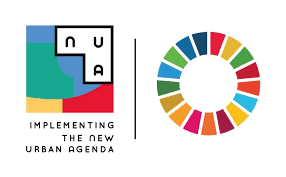Impact Story
Gaza & West Bank
Through the Haya joint programme, UN-Habitat in Palestine together with UN Women and partners have initiated interventions to address and contribute to preventing violence against women and girls in various public spaces in the targeted cities in the West Bank and the Gaza Strip. Through innovative tools and technologies for participatory planning and community engagement, it supports community led initiatives, and promotes youth leadership. Local authorities, architects, property owners, constructors and other multi-stakeholders have been working alongside marginalised communities, including women and girls, to propose recommendations and redesigns for various areas.
Facts

Category: Public and Private Partnership
Location: Jericho, Jenin, Nablus, Bethlehem, Beit Jala, Beit Sahour, Al Doha and Khan Younis
Time: April 2018 – ongoing
Partners: UN Women, UNFPA, UNODC – Ministry of Local Government, Palestinian Housing Council, Municipalities of the targeted cities
Participants: Local girls and young women, practitioners, architects.
Her story
Challenges
Lack of access to public spaces, whether due to conservative social and cultural norms or fears over safety, has a significant negative impact on women’s, girls’, and disabled’s quality of life. Like other forms of gender-based violence, violence against women and girls in public spaces is also a significant public health threat and places a considerable burden on the mental health and wellbeing of Palestinian women. Women and girls are among the marginalised groups who are mostly deprived of basic necessities and face social and economic marginalisation, isolation and limited access to social and cultural facilities. Lack of places to meet, interact and play safely, or to cater for participation and engagement in developing their built-environment, means that their needs are not reflected. Information related to women’s safety in public spaces and the status of public spaces in general in turn imposes other layers of challenges while addressing the quality of public spaces at the local, regional and national levels. The overarching goal of the Haya project in Palestine is to improve the quality of daily public life for women and children in the Palestinian communities of the West Bank and the Gaza strip. The Haya project highlights the lack of safe and inclusive public spaces for women and children and proposes participatory planning, community engagement and innovative technology as modes of intervention. Girls and young women face specific challenges in urban settings and must become key stakeholders in urban development projects.
Solutions
UN-Habitat facilitated participatory city-wide public space assessments in five urban areas: Jenin, Nablus, Jericho, Bethlehem cluster in the West Bank, and Khan Younis in the Gaza Strip to analyse the state of open public spaces located in the targeted areas and to provide verifiable data on women’s experiences in those spaces. The assessments have utilised the tools to be found in the Her City platform for city-wide public space assessments and adopted an active participatory approach with high engagement of the targeted municipalities, special focus was given to women’s safety in public spaces which has been a vague concern due to the lack of related statistics and information at all levels including municipal and community levels. Design and community participation is an efficient way to establish and address the needs and priorities of different groups in society. In the highly conflicted geography of the Gaza Strip and the West Bank, children’s playgrounds, community gardens, safe and resourceful pedestrian areas, easy access sidewalks, benches, roundabouts, and recreational spots garlanded with trees and leisure tools are being proposed throughout the territory to improve public spaces. The interventions in Jericho, Jenin, Nablus, Bethlehem, Beit Jala, Beit Sahour, Al Doha and Khan Younis also focussed on fostering youth leadership, community awareness and local government engagement in harnessing existing resources and innovating new tools and techniques. The collaboration during the design process and the employment of female architects helped advance this mission even further, resulting in more safe opportunities for all. In Khan Younis city, UN-Habitat invested in the capacity of 40 young girls and boys to use the popular computer game Minecraft as in the fifth block of the Her City approach, to design inclusive public spaces that are safe for women. Moreover, young people were given a space to discuss their proposals with decision-makers who endorsed the final actual design that integrates all elements and priorities raised throughout the participatory design workshop. Workshop participant 17-year-old Reem said:“Minecraft allowed us to think and design as engineers and to solve the physical and social challenges that were detected in the site.”
Opportunities
After city wide public space assessments in all mentioned cities, top priority public spaces to be developed have been identified. For example in Khan Younis, the assessment indicated which spaces in the city to focus on moving forward. Proposed interventions had a strong focus on improving safety and inclusion in public spaces. Awareness and advocacy campaigns to promote women’s safety in public spaces have led to capacity building of the municipalities, gender responsive public space policy and design methodologies and a joint curriculum development with local universities on designing safe and inclusive public spaces. The intervention machinery has used several ideas, designs and inspiration tools that are to be found within the Her City toolbox to implement elements like biodiversity and ecosystem plantations, movable furniture, accessible public spaces, at the same time assuring the perseverance of culture, history and the initial character of the public spaces. At the end of 2021, UN-Habitat in close cooperation with the Palestinian Ministry of Local Government, Khan Younis Municipality, and the Palestinian Housing Council, inaugurated a new safe, inclusive, and accessible public space entitled the “Haya Promenade” for women, girls, and families in Khan Younis. Located by the Mediterranean Sea, the most disadvantaged area in terms of infrastructure and public facilities, the new promenade provides a comfortable space where the city’s more than 200,000 women and girls can easily and safely exercise their rights to the city. In terms of institutional capacity building, Haya supported the development of strategies aimed at supporting local and national governments in developing legislation, policy, norms and practices, which support the Palestinian government and its institutions in adopting a holistic and integrated approach to the planning, design development, creation, protection and management of public spaces in Palestinian cities which are safe, inclusive and accessible for everyone especially women and girls.
Impact
The interventions led to improvement in the spatial distribution of public spaces. There was an increase in quantity and equitable distribution of the public spaces, with creation of new neighbourhoods and conversion of abandoned and under-used public spaces. A considerable improvement in the management and governance of public spaces promoting inclusivity and diversity was also seen. The project also reinforced the importance of guidelines and standards on safety, greenery, accessibility and comfort of the public spaces for all and especially marginalised communities, including women and girls. Lastly, interventions, promoting celebration and promotion of the living culture of both the Gaza Strip and the West Bank by rehabilitated religious tourist routes and the celebration of the cultural heritage. The project has shown that prioritising girls and young women in urban development is crucial to make cities and public spaces more inclusive and sustainable. In this sense, it has also proven to be an efficient tool to meet global sustainability agendas such as the 2030 Agenda SDGs 5, 10, 11, 16 and 17.
Lessons learned
Community participation was key in the development of the recommendations, guidelines and solutions as they better informed decisions and judgments based on the context of the users’ own environment and circumstances, which in turn leads to responsive spaces for which the local government and communities can be held accountable. The beneficiaries, especially women and girls, could participate in deliberations, workshops and make wish-lists of how they imagine the space to look like in the future. Furthermore, the investigation of the accessibility, distribution, quality and network of the public spaces in the municipalities played a crucial role in designing the strategy of interventions while assuring an equitable use of the resources. The design and the implementation of the different elements and urban furniture were done gradually, depending on the evolving needs of the inhabitants, especially in highly volatile geographies such as the West Bank and the Gaza Strip. The municipal capacities, knowledge and skills are very weak in mainstreaming gender inclusiveness and safety in public spaces. Despite the development of gender-responsive strategies for the selected urban areas throughout Haya, still more investment is urgently needed to operationalize and institutionalise those strategies. To ensure the effectiveness of those strategies and commitment of local authorities toward achieving them, national policies and regulations must be developed to serve as a regulative and legislative umbrella that fosters the commitment and endorsement at the local levels. The initiative also seeks to contribute to the development of new methods for local urban development and planning that promote safe and productive public spaces, especially for conflict ridden and affected countries and geographies.
Results

Block 2: City wide assessment
A city level analysis based on girls and young women’s observations and a list with their top priority spaces to be improved.

Block 3: Site specific assessment
Collecting quantitative and qualitative data by girls and young women on the state of the space that is considered a top priority for improvement.

Block 4: Analysing challenges
A joint vision for the space based on a detailed analysis of the girls’ needs and current privileges in the space.

Block 5: Designing ideas
A rough design in Minecraft of the new space made by the girls and professionals based on the solutions identified throughout the process.
Block 6: Recommendations
A joint action plan for the space where girls and professionals negotiate ways forward for implementation and potential impact of the project.

Block 8: Sharing results
Approval to move forward and start construction from decision-makers and community and spreading of knowledge gained throughout the project.

Block 9: Implementation and follow-up
An evaluation of the process, follow up on construction by the girls and a final report on the results of the entire project with a mainstreaming strategy to scale up similar initiatives.
Related SDGs

The project relates to the 2030 Agenda Sustainable Development Goals (SDGs) 5, 10, 11, 16 and 17.
About
Contact
hercity@un.org
Follow us
Facebook: @HerCity
Instagram: @HerCityToolbox
Twitter: @HerCityToolbox
YouTube: @HerCity
TikTok: @HerCity
#HerCity
Her City is a joint urban development initiative by UN-Habitat (the United Nations Human Settlements Programme) and Shared City Foundation.